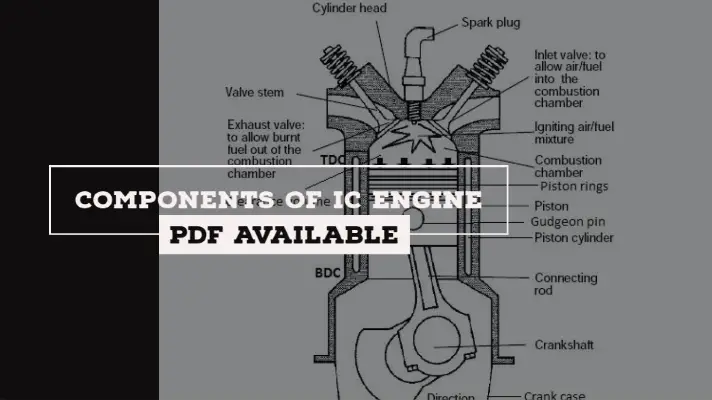
Numerical modelling of the internal combustion engines and the application of emulsified nano-fuels have also been discussed in detail. Mixture preparation in SI engines (PDF) 8. Gas properties and fuel - air cycle cycle simulation (PDF) 7. It also provides an insight into the development of various surrogates for gasoline and diesel fuels. Kinetics, equilibrium and dissociation lecture notes not available 6. The application of different liquid (Alcohols and biofuels) and gaseous (natural gas and hydrogen) fuels as alternatives to the fossil fuels has been detailed. Various strategies that are employed to control these performance and emissions characteristics have been discussed.

It lays down various parameters and their mutual dependencies and how they affect engine' performance and emissions characteristics. This study reviews the status of the current research on all of the above mentioned frontiers. Research on IC engines has many frontiers: optimum engine design to get better fuel utilization and mitigate spefici emissions development of alternate fuels to reduce the dependence on fast depleting fossil fuels use of oxygenated hydrocarbons in conventional compression ignition (CI) and spark ignition (SI) engines development of reaction kinetics and thermal databases for different hydrocarbons to simulate combustion process in IC engines. At the end ot each chapter Highlights, Objective Type Questions, Theoretical Questions and Unsolved Examples have been added to make the book a complete unit in all respects.Internal combustion (IC) engines continue to maintain their position as principle prime mover for energy transformation especially in transportation and power sectors.

A large number of solved examples, properly graded, have been added in various chapters to enable the students to attempt different types of questions in the examination without any difficulty.

Each chapter of the book is saturated with much needed text supported by neat and self-explanatory diagrams to make the subject matter self-speaking to a great extent.

Salient Features The presentation of the subject matter is very systematic and the language of text is in a lucid, direct and easy to understand manner. The book contains 21 chapters in all and on “Objective Type Questions Bank” at the end. This book on “Internal Combustion Engines” has been written to meet exhaustively the requirements of various syllabic in this subject for courses of B.E., B.Tech.


 0 kommentar(er)
0 kommentar(er)
